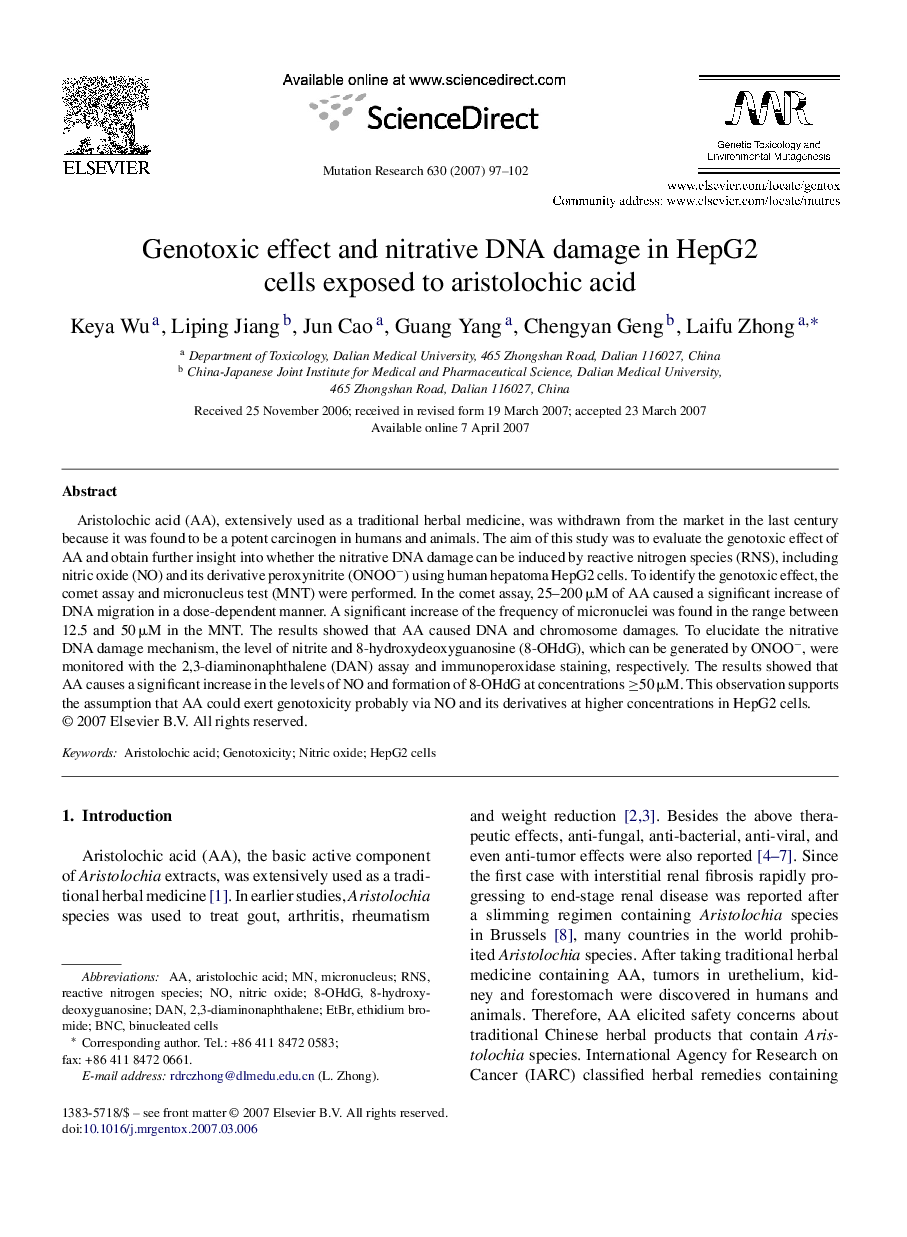| Article ID | Journal | Published Year | Pages | File Type |
|---|---|---|---|---|
| 2149174 | Mutation Research/Genetic Toxicology and Environmental Mutagenesis | 2007 | 6 Pages |
Aristolochic acid (AA), extensively used as a traditional herbal medicine, was withdrawn from the market in the last century because it was found to be a potent carcinogen in humans and animals. The aim of this study was to evaluate the genotoxic effect of AA and obtain further insight into whether the nitrative DNA damage can be induced by reactive nitrogen species (RNS), including nitric oxide (NO) and its derivative peroxynitrite (ONOO−) using human hepatoma HepG2 cells. To identify the genotoxic effect, the comet assay and micronucleus test (MNT) were performed. In the comet assay, 25–200 μM of AA caused a significant increase of DNA migration in a dose-dependent manner. A significant increase of the frequency of micronuclei was found in the range between 12.5 and 50 μM in the MNT. The results showed that AA caused DNA and chromosome damages. To elucidate the nitrative DNA damage mechanism, the level of nitrite and 8-hydroxydeoxyguanosine (8-OHdG), which can be generated by ONOO−, were monitored with the 2,3-diaminonaphthalene (DAN) assay and immunoperoxidase staining, respectively. The results showed that AA causes a significant increase in the levels of NO and formation of 8-OHdG at concentrations ≥50 μM. This observation supports the assumption that AA could exert genotoxicity probably via NO and its derivatives at higher concentrations in HepG2 cells.
